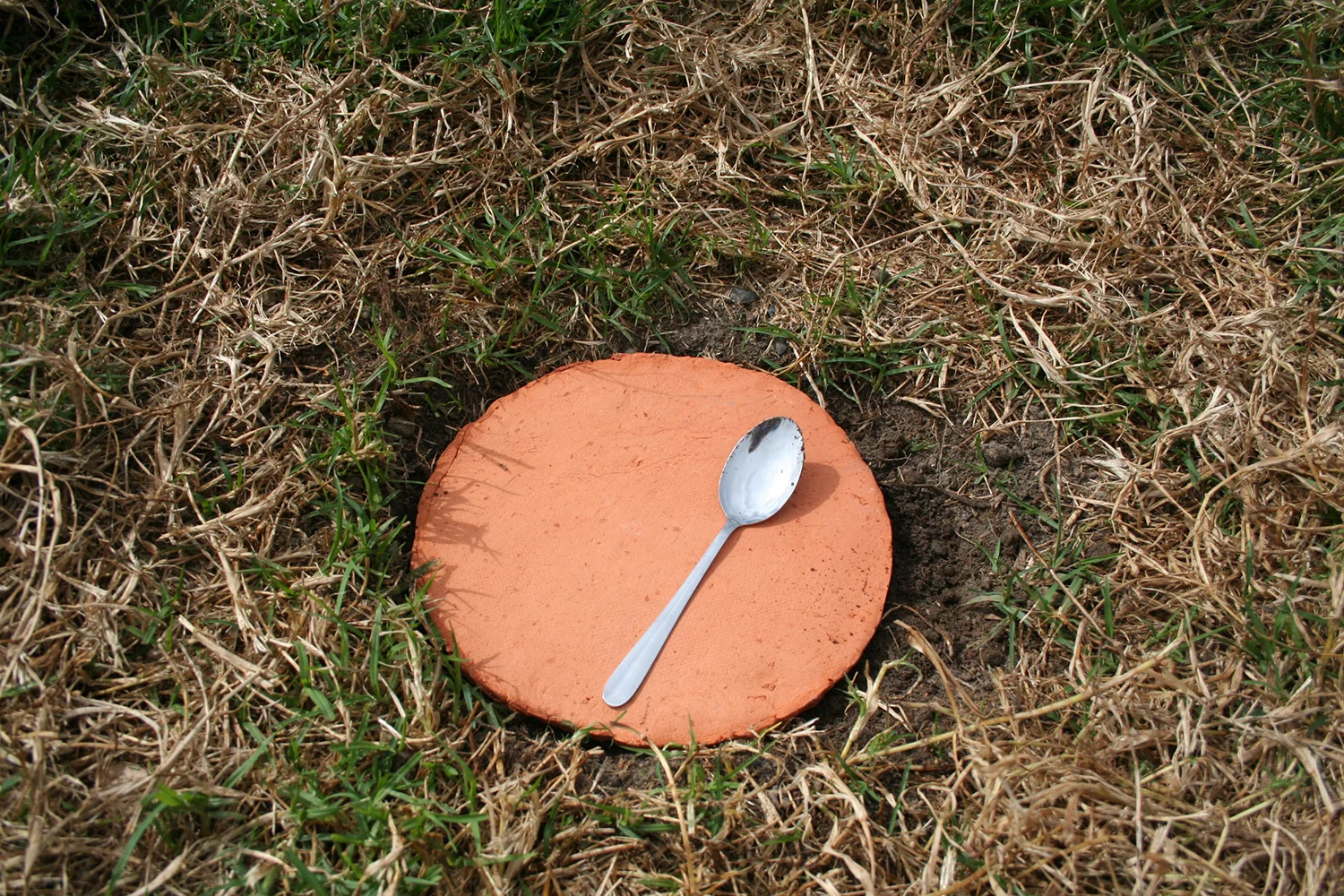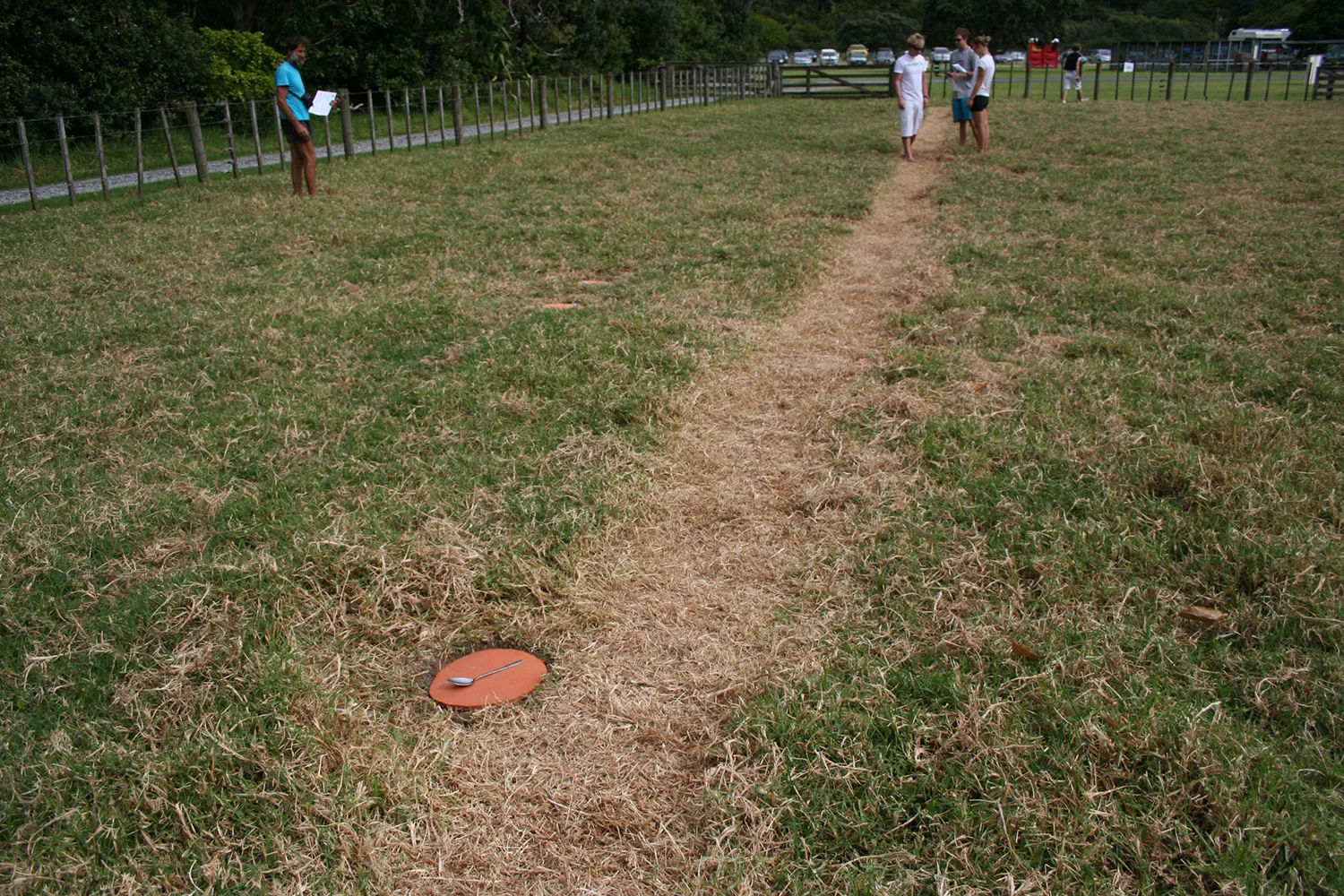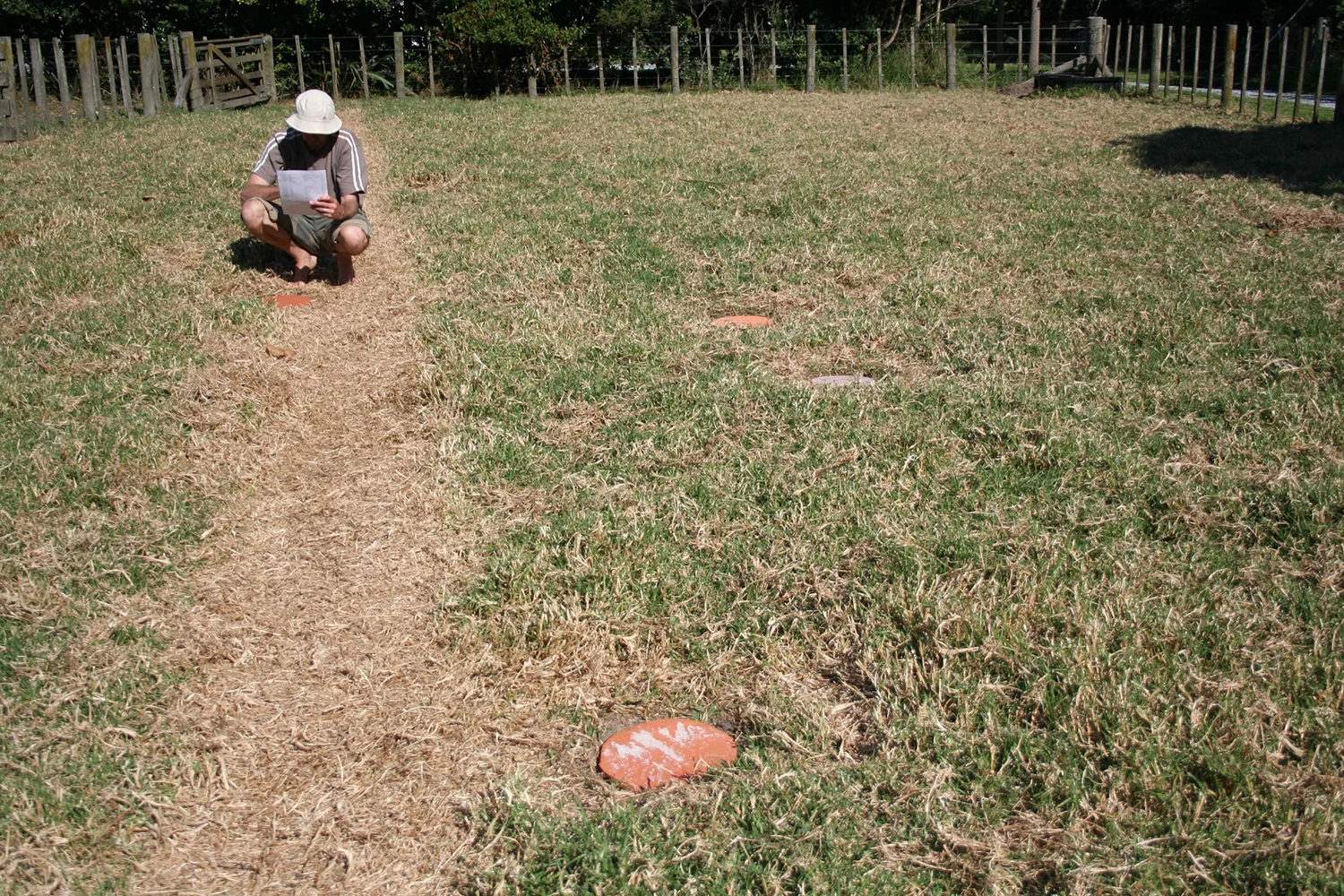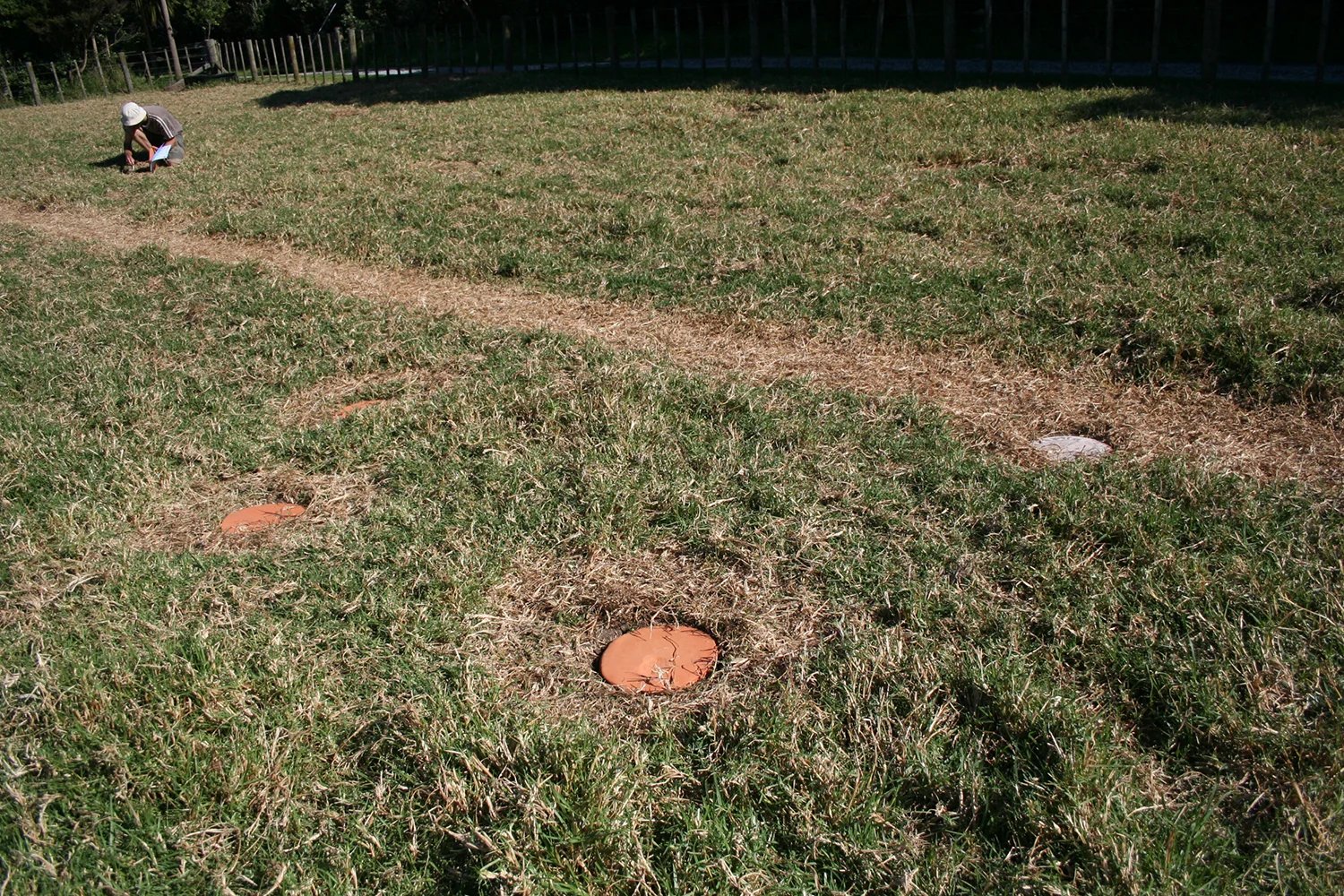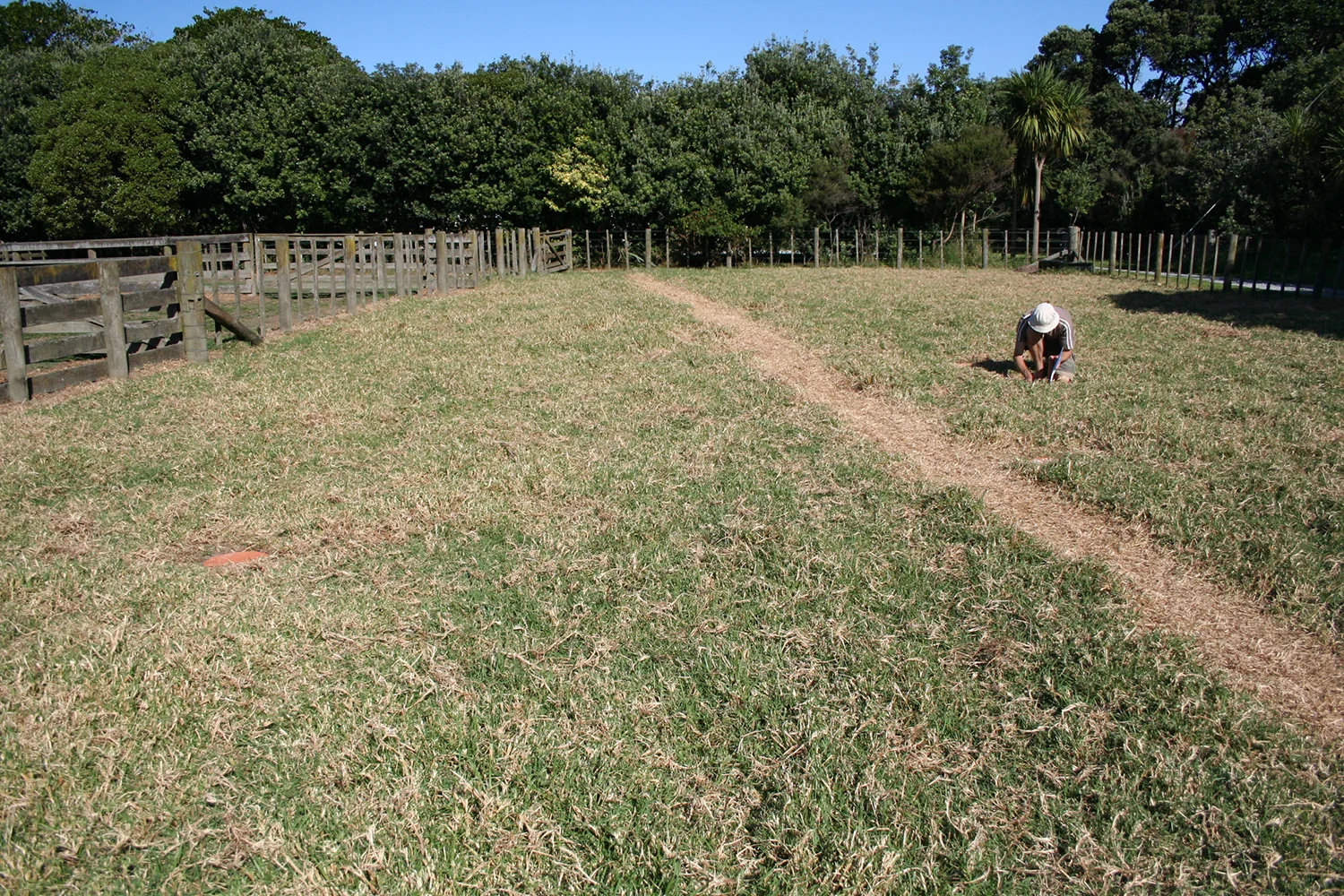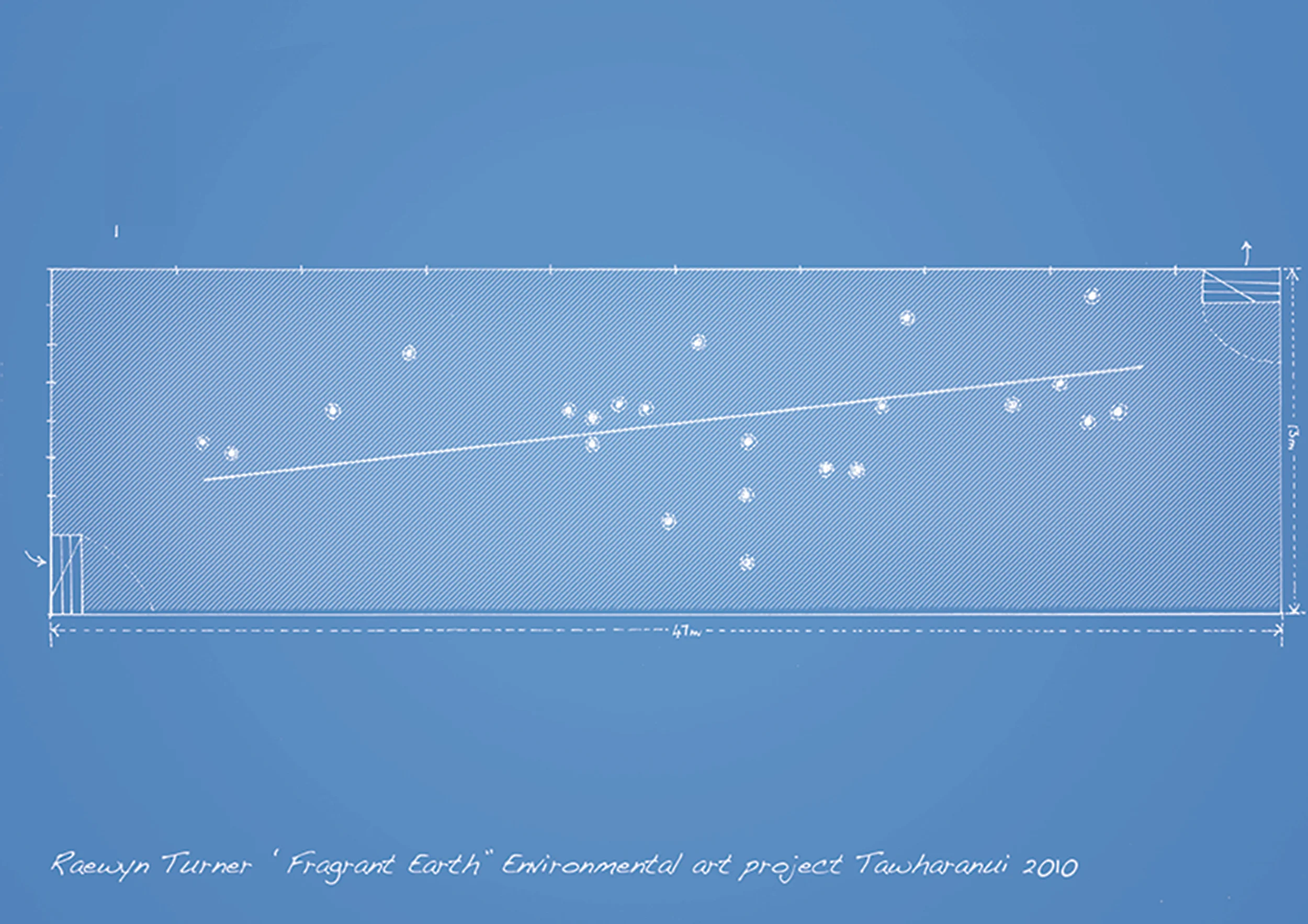
Fragrant Earth: Raewyn Turner 2009
Fragrant Earth : Environmental Art Project at Tawharanui Regional Park, Northland. 23 holes filed with soil were placed in the pattern of a Phillips curve in a paddock of Tawharanui. I used the fences of the paddock for the x and y axis of the graph.
Pastoral land use continues to drive NZ's economy. The smell of animals grazing on pastures, and cut lawns wafting across neighbourhoods, both of which were originally grown from introduced seeds, give out volatiles. Furthermore, the larger-scale social, environmental , cultural and ethical consequences of engineering the landscape into the grid system of fields and front yards in the mid 1800’s, can be experienced in the cipher of the smell that now envelops us.
Fragrant Earth references government fiscal policies, the Phillips Curve and the balance between the promise of a wage adjusted to inflation and the power to consume. The twenty three holes in the earth are filled with fragranced soil. The placement of the holes indicate data points on the graph of the Expectations-Augmented Phillips curve which describes a relationship between inflation and unemployment.
The original simple Philips curve plotted the relationship between the rate of inflation and the unemployment rate between the years 1861 – 1957. In 2009 the Phillips curve remains the NZ Reserve Bank’s core model of the economy (the Forecasting and Policy System or FPS). The fiscal forecasts are prepared on the basis of underlying economic forecasts. Such forecasts are critical for determining revenue and expense estimates.
The Expectation Augmented Philips curve takes into account future inflation expectations. This implies the curve becomes a horizontal line at a certain point, indicated by the mechanism of the piece.
Fiscal Forecast Assumptions
The Data Point Fragrances Reference D. Merrit’s Poem:
Curious diets of the poor, down trodden and the so-called mentally ill.
Fragrances supplied by International Flavours and Fragrances, NZ, Formula Foods, Flairoma and Plant and Food Research NZ.—-MANY THANKS!




